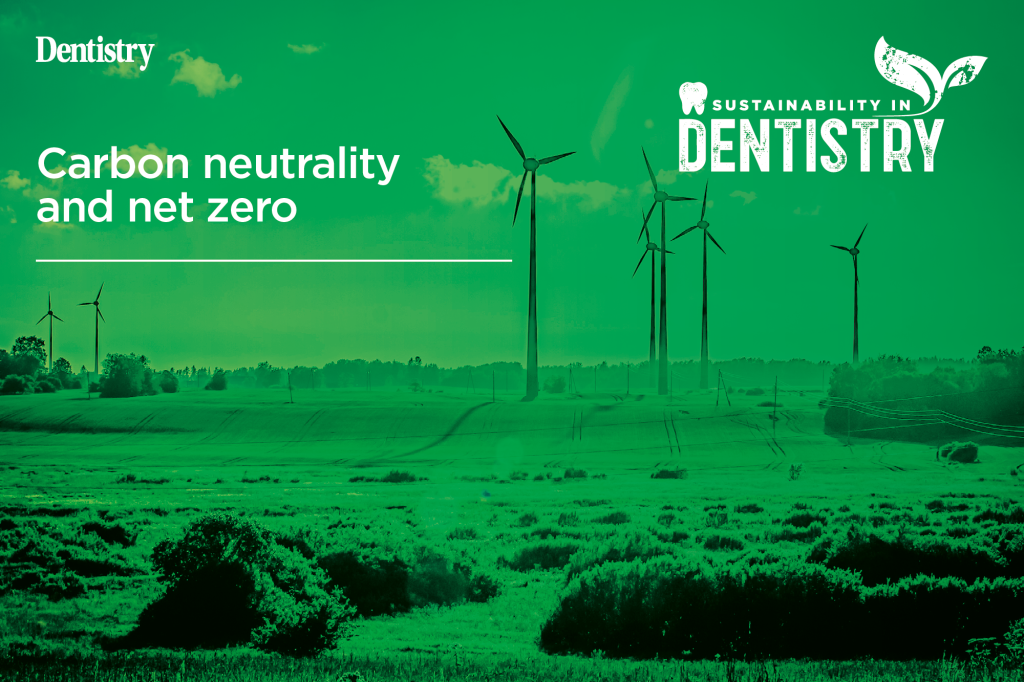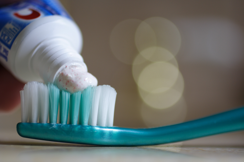Are you looking to reduce your carbon footprint? Patrick Ward presents a guide to helping your practice become carbon neutral or net zero.
The impact of climate change is becoming starker every year. In the UK alone we are seeing hotter summers, increased flooding and colder winters. This is impacting everything from public health to food supply chains. As such, the public, including your patients, increasingly want reassurances that the services they pay for are taking action to mitigate their roles in the climate crisis.
That is why more businesses, including dental practices, are looking to go carbon neutral or reach net zero. But what do these terms mean and what can be done to achieve these statuses?
What do these terms mean?
It is first important to understand the meaning of carbon neutrality and net zero. Unhelpfully, the terms are often used interchangeably, but there are some significant differences between them.
Making your practice carbon neutral means that it will, on balance, have a neutral impact on carbon dioxide levels in the atmosphere. That is an important start, because carbon dioxide makes up more than 75{e60f258f32f4d0090826105a8a8e4487cca35cebb3251bd7e4de0ff6f7e40497} of the greenhouse gases in our atmosphere.
Going net zero takes this one step further, ensuring that you are carbon neutral while also being neutral in terms of other greenhouse gases, which make up around 25{e60f258f32f4d0090826105a8a8e4487cca35cebb3251bd7e4de0ff6f7e40497} of global greenhouse gas emissions and include methane, nitrous oxide and hydrofluorocarbons.
While carbon neutrality relies mainly on offsetting your carbon footprint, net zero has more of a focus on cutting back your emissions as much as possible, with a more limited role for offsetting.
Becoming carbon neutral is certainly a large step towards combating climate change. However net zero is fast becoming the gold standard for sustainability. Here we will explore both concepts and how you can become an accredited carbon neutral or net zero business.
Carbon neutrality
If you want to become a carbon neutral practice, you will need to do three things: estimate your current emissions, find ways to reduce them and invest in carbon offset schemes, which are ways of drawing carbon dioxide out of the atmosphere.
There are many reasons to work towards being carbon neutral. First and foremost, it is vital to the survival of life on our planet. Carbon dioxide is one of the main causes of climate change.
More than that, it makes you a climate leader. According to Carbon Neutral Britain, 81{e60f258f32f4d0090826105a8a8e4487cca35cebb3251bd7e4de0ff6f7e40497} of FTSE 100 companies are committed to cutting emissions to zero by 2050 – but just 8{e60f258f32f4d0090826105a8a8e4487cca35cebb3251bd7e4de0ff6f7e40497} are currently carbon neutral. Time is of the essence in the fight against climate change, and taking decisive steps now can put you ahead of the competition.
Getting started
The first step is to undertake a carbon footprint audit. This will estimate your current carbon emissions. While there are means of doing this yourself, the most effective way is to pay for a third party to conduct the audit. This will ensure the audit meets international standards – notably ISO 14064 and the Greenhouse Gases Emissions Protocol Accounting Standard. It also offers transparency to customers and stakeholders.
Dentistry.co.uk readers have access to a sustainability audit produced by ESG and CSR coach Mark Topley – this is a great place to begin analysing your carbon footprint. Carbon audits will include three types of emissions.
- Scope 1 emissions are those coming directly from a business, including things like fuel combustion in company vehicles
- Scope 2 emissions are those coming from the energy purchased by your business, including electricity and gas
- Scope 3 covers everything else – from the fuel used by your patients as they drive into the surgery to how much carbon is released through the manufacture of goods you purchase.
Offsetting
Once your carbon footprint has been estimated, you can offset your emissions. Offsetting projects may involve planting trees to capture carbon dioxide from the atmosphere or investing in green energy. Because of the global nature of climate change, these offsetting projects can take place anywhere on the planet.
Carbon offsetting often uses carbon credits – each credit holding the value of a tonne of carbon dioxide. So, if you discover that your annual carbon footprint is 10 tonnes, you will need to buy 10 carbon credits to offset it.
It is important to work with suppliers that use effective techniques to capture carbon, so having them accredited by organisations like Gold Standard or the Verified Carbon Standard is a must.
And while planting trees is a popular way to offset your emissions, be warned that they only become effective carbon capturers after around a century. This means you will need reassurances that the trees will stay in the ground for far longer than you will be around!
When this stage is complete and verified, you will be certified as carbon neutral. But the journey does not end there.
Going the extra mile
Achieving carbon neutrality will have a significant impact on how sustainable your practice is – but becoming net zero is fast becoming the benchmark.
One of the reasons for this is that some polluters will use carbon credits and other offsetting schemes as an excuse to increase emissions. If you become fully net zero, you are producing zero greenhouse gas emissions (not just carbon dioxide) in the first place. This definition of net zero is that used by the UK government, which has pledged to meet the target by 2050.
This may be practically impossible – even if your practice runs entirely on renewable energy, for example, there will doubtlessly be some aspects of your operations that involve the combustion of fossil fuels or the release of other greenhouse gases. However, unlike becoming carbon neutral, being net zero requires your business to take practical steps to significantly reduce your emissions.
Follow Dentistry.co.uk on Instagram to keep up with all the latest dental news and trends.




